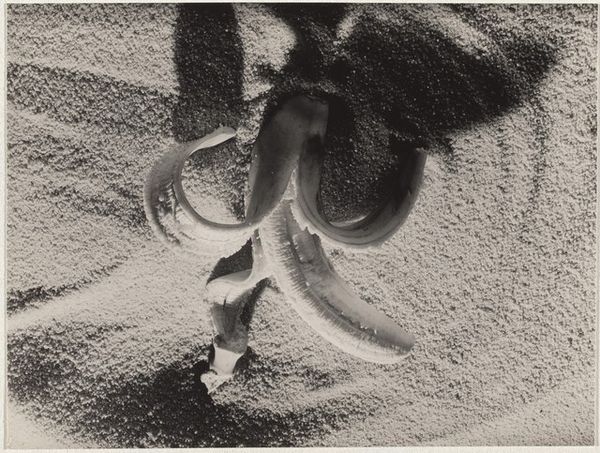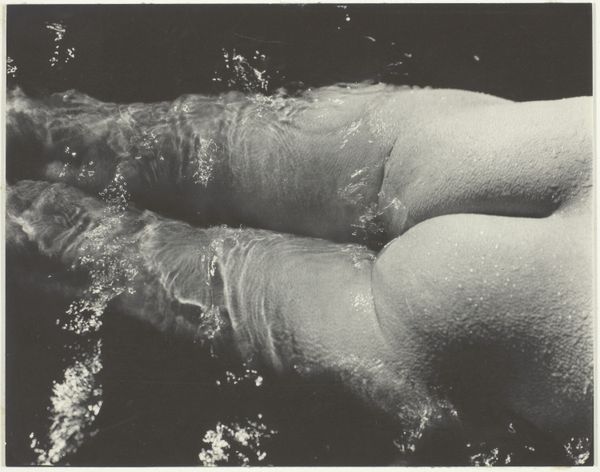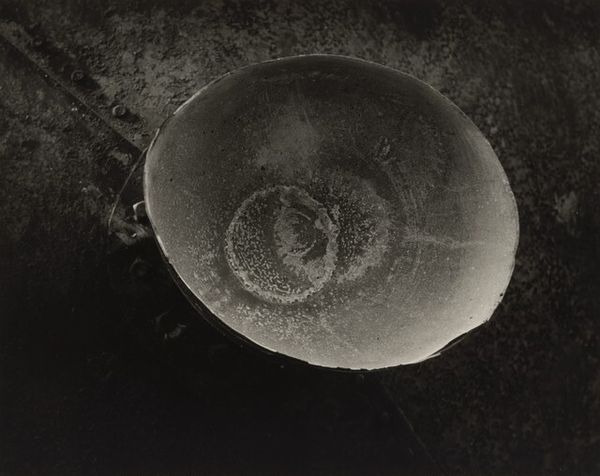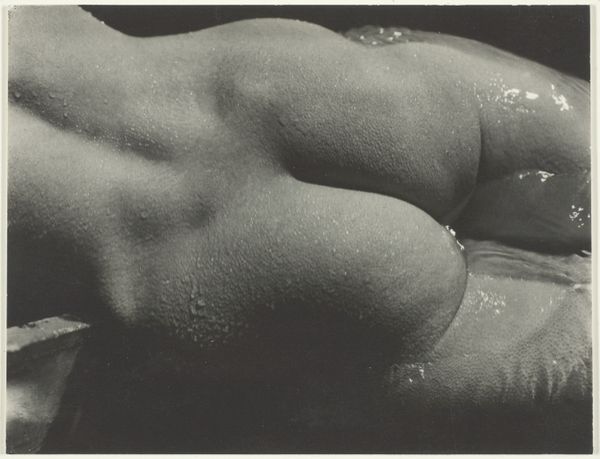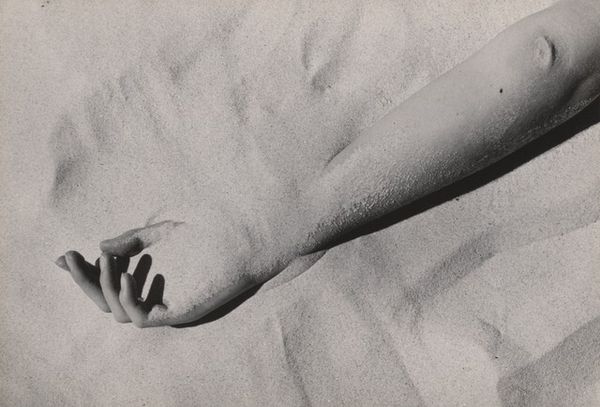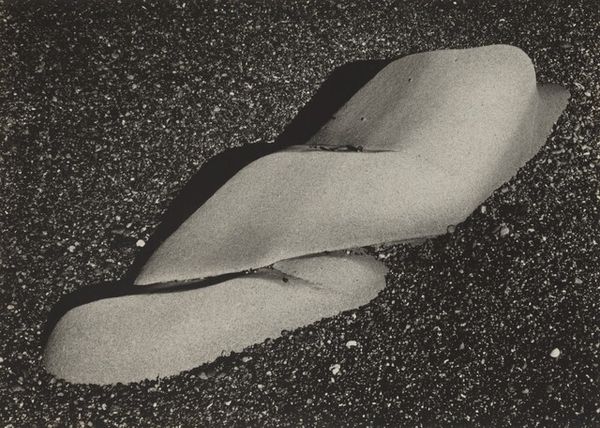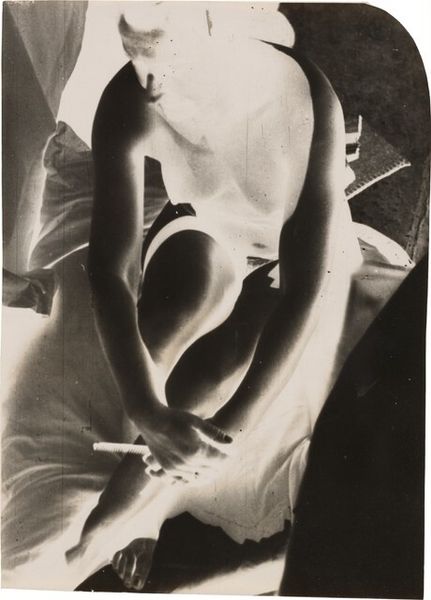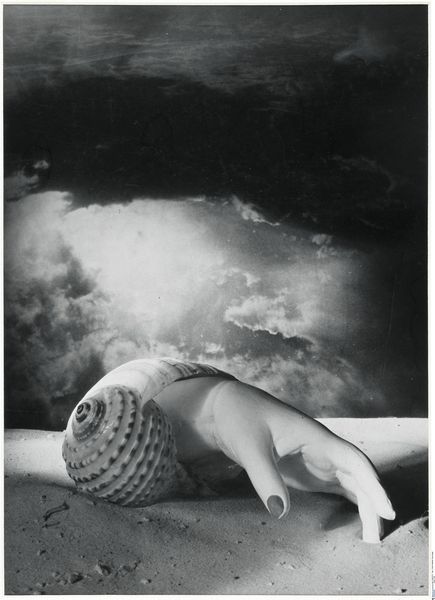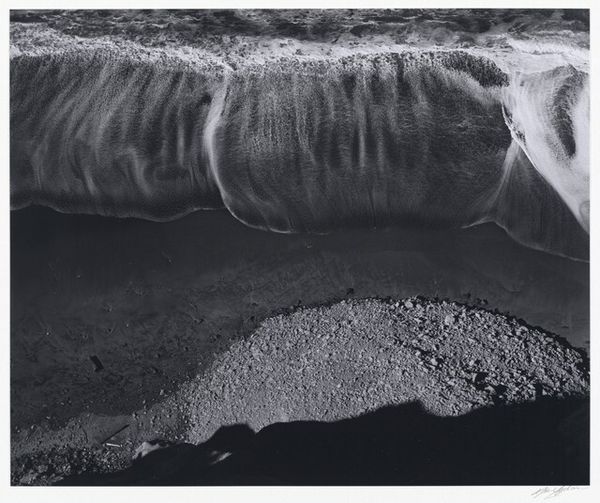
photography
#
still-life-photography
#
black and white photography
#
photography
#
monochrome photography
#
monochrome
#
realism
#
monochrome
Dimensions: sheet (trimmed to image): 10.8 x 8.1 cm (4 1/4 x 3 3/16 in.)
Copyright: National Gallery of Art: CC0 1.0
Curator: Here we have Robert Frank's “Banana in Sand—Design,” created around 1941. What are your first impressions? Editor: Stark. The composition—a half-peeled banana on sand—is deceptively simple. The monochrome palette highlights the textures, almost unsettlingly so. It's more disquieting than inviting. Curator: Indeed. Think about the context: the early 1940s. Resources were scarce; even food had political and economic weight. A seemingly casual image of a discarded banana peel points toward consumption and waste, doesn't it? Editor: It's definitely loaded now that you point that out! The curve of the peel creates dynamic lines against the static graininess of the sand, which, because it is a photograph, becomes abstracted. Does the sand contextualize or decontextualize the fruit? Curator: The juxtaposition elevates a humble piece of fruit. Food production, shipment, consumption…each step relies on human labor and systems of exchange, something starkly visible through the realism of photography. There is something tragic in framing a moment of enjoyment in contrast to how easily those same systems fail so many. Editor: The photograph does abstract these material and social elements, framing it for contemplation through its interplay between light and shadow, between form and texture. The contrast creates an image, even a feeling, rather than just recording. Curator: It is never "just" a record! It presents us with this raw materiality in this shot which inherently directs the flow of symbolic and real-world exchanges, even in something as seemingly mundane as fruit waste. Editor: Point taken! Though, it's difficult to fully remove the impact of light. We tend to think of it as recording, but I find its modulation is a real artform here! It has certainly provided us with insights on materiality that will continue to evolve. Curator: Agreed. Seeing it through a Formalist lens has helped illuminate its underlying depth.
Comments
No comments
Be the first to comment and join the conversation on the ultimate creative platform.
